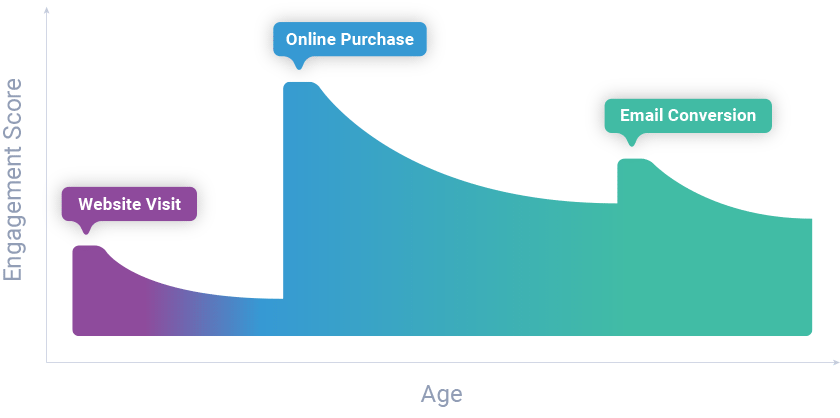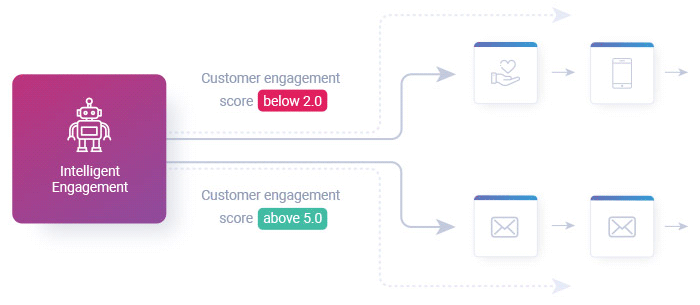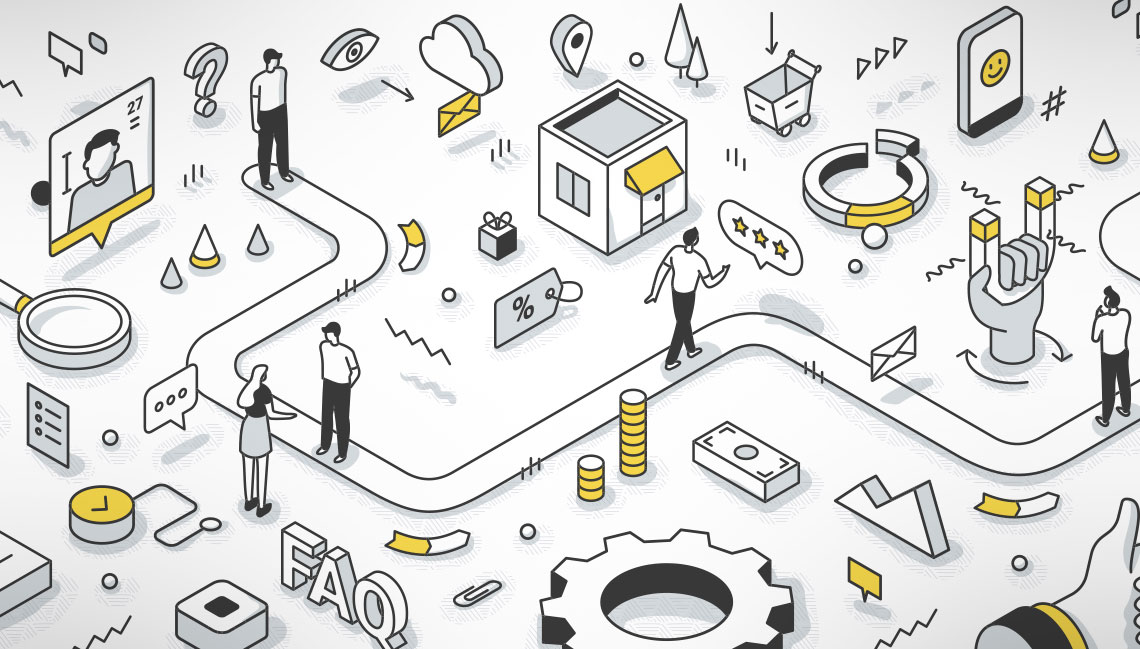While many businesses understand the importance of customer engagement to mitigate this risk, few understand the importance of how engagement is measured, how it’s increased and how it’s retained. Measuring engagement is the first critical step in understanding the relationship between your brand and the customer. The most effective way to do this is by using an engagement score. The score is a number that reflects how engaged a customer is with your business at any given time. Knowing how powerful this number can be, we’ve dedicated this article to showing you how it’s generated and how it can be used to retain or regain a customer’s loyalty.
How does an engagement score work?
To determine an engagement score, multiple factors are considered based on specific customer behaviors that are of value to your business goals. Some of these may include:
- When a customer visits your website
- When a customer makes a purchase from your online store
- When a customer completes a survey
- When a customer converts (clicks-through) from an email
Each behaviour is rated with a different score (called boost scores). At each interaction, a boost score is applied to the customers overall engagement score. For example, if a customer clicks through from an email, they may receive a boost score of 25. However, if they make a purchase from your online store – a highly valued interaction, they may gain a boost score of 50. That customer would now have an engagement score of 75, telling you they are a highly engaged.

Using our software, a business is able to tailor its own engagement score factors by selecting the behaviors that have the most impact to the business relationship with the customer. The software not only enables you to calculate an increase in engagement score, it also enables you to select a duration of time you believe is an effective measurement of that customer’s behavior. For example, a customer might purchase from you on average three times a year, so you may wish to set the measurement duration to approximately 120 days, until the score reduces to zero. Similarly, for a score relating to a lower engagement value such as an email converting ‘click-through’, you may wish to set the effective duration of measurement to 14 days.

In the above diagram you can see how the engagement score is boosted and reduced over time based on a customer’s interactions.
Driving engagement through smart automation
While we’ve shown how simple it can be to measure your customer’s engagement score, the challenge for many businesses is maintaining a high level of engagement and recognizing the decline or shift in customer behavior early enough to effectively re-engage in a personalized way. Using Kademi, once the engagement score has been measured by tracking the customer’s interactions, we can configure the software to instinctively steer a customer towards a series of goals that align with the businesses objectives, for example, purchasing online or completing a feedback form. We do this using our smart automation tool, which enables you to engage with a customer at the right time using the right engagement strategy depending on where they are within the customer journey.

Here to help
To achieve greater insights into your customer behavior and drive maximum results for your business, it’s vital you’re able to understand your customer’s behavior, retain loyalty and re-engage in an effective yet meaningful way. From tracking engagement scores, to setting up smart automated workflows, our software can assist you in elevating your capabilities to drive the outcome your business needs.
(RE-PUBLISHED FROM OUR PARTNERS AT KADEMI)




